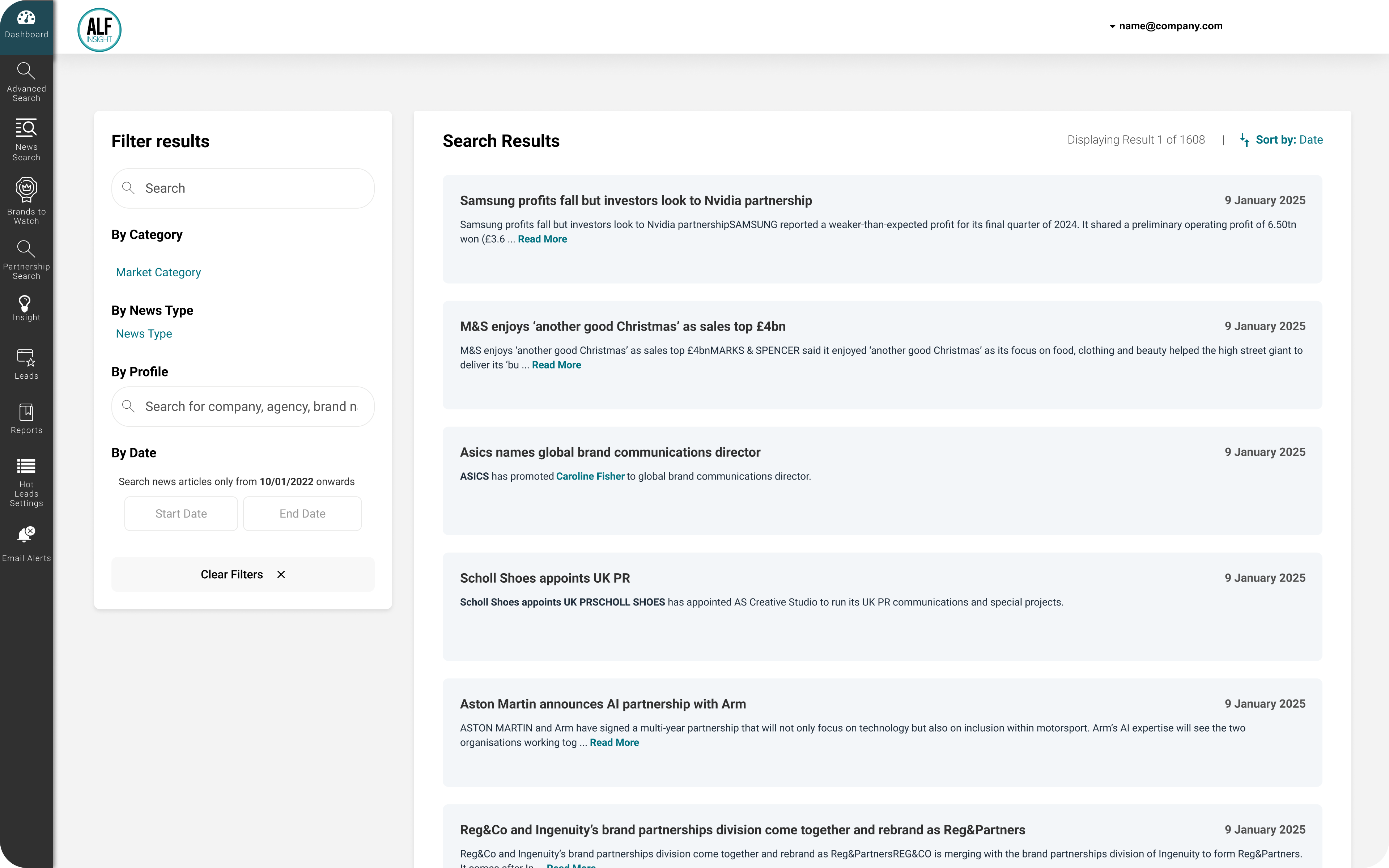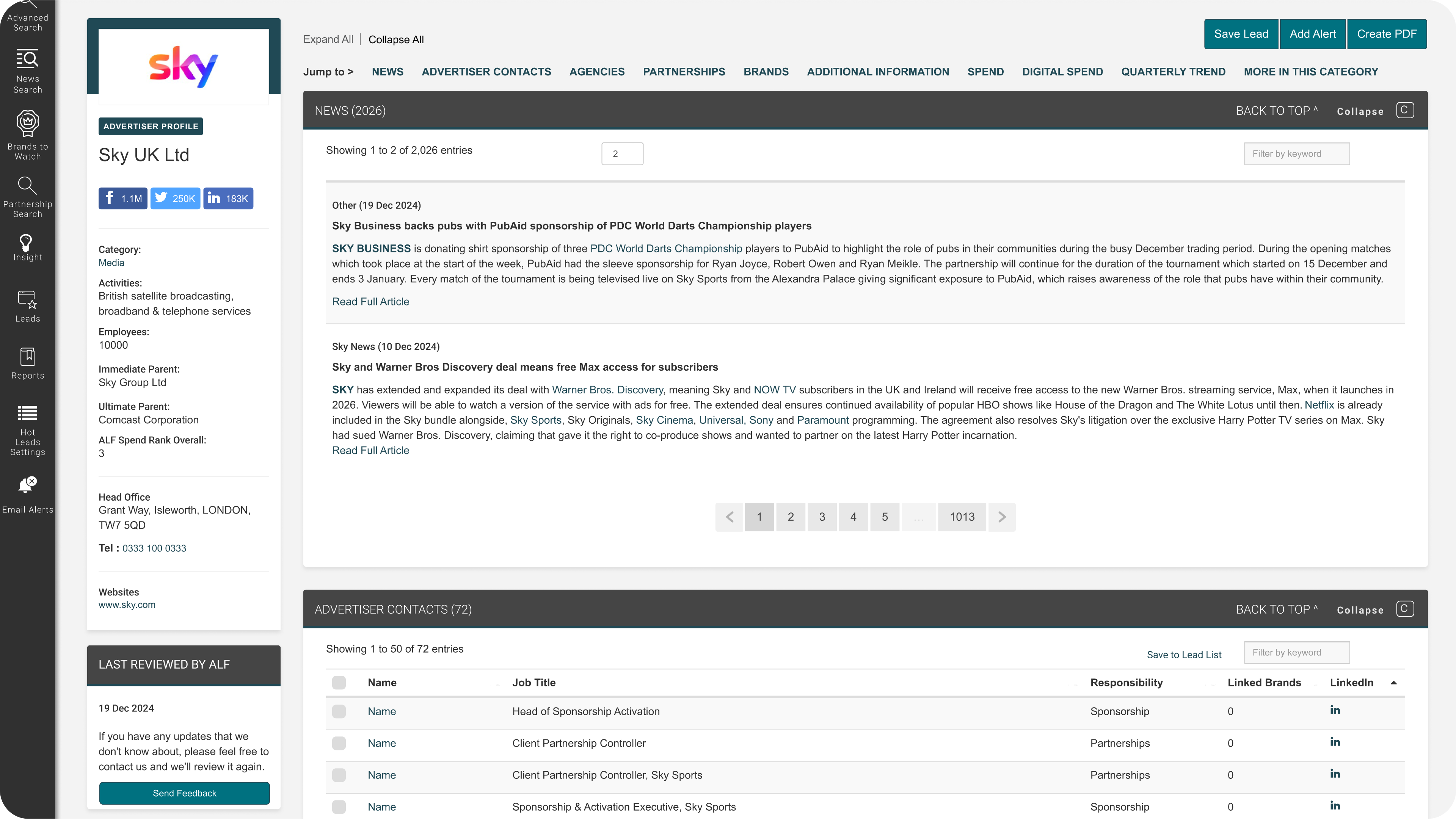What is Prospecting in Sales?
)
Let’s talk about something every salesperson knows all too well: getting in front of the right person at the right time is hard. You could have the best product or service in the world, but if you’re pitching to the wrong person, you’re just spinning your wheels.
That’s where sales prospecting comes in. It’s not just about finding potential customers - it’s about finding the right ones. The ones who actually need what you’re offering and have the power to make a decision. Sounds easy on paper, but if you’ve ever spent hours scrolling through LinkedIn or Googling “marketing decision maker at [insert company],” you know it’s anything but.
So, how do you make B2B prospecting less of a headache and start using it to get new business wins? There’s no magic bullet or secret recipe to success, but if you follow this guide, you’ll be one step closer to easing that infamous business development headache. Let’s break it down…

What is sales prospecting?
At its core, prospecting is about identifying and reaching out to people or businesses who might benefit from what you’re selling. It’s the first step in the sales process, and it’s arguably the most important. After all, if you don’t have the right leads, you’re not going to close deals.
I hate to state the obvious, but it’s worth repeating: prospecting isn’t about quantity; it’s about quality. You don’t want to waste time chasing leads that will never go anywhere. You want to focus on high-value prospects - the ones who are most likely to buy from you.
-
Pro-tip: If you’re in an agency, check out our blog on how to generate quality leads for agency growth
Why is prospecting so important?
Picture this: you’ve spent weeks perfecting your pitch. You’ve rehearsed it, tweaked it, and finally landed a meeting. But halfway through the conversation, it hits you - the person you’re talking to can’t actually make a decision. Sound familiar?
That’s what happens when prospecting goes wrong. It’s like showing up to a party only to realise you’ve got the wrong address. You’ve put in all the effort, but you’re not where you need to be.
Good prospecting, on the other hand, changes the game.
Here’s why it matters:
- You actually get results. When you reach out to the right people - the ones who have the authority, budget, and need to say “yes” - your chances of success skyrocket. It’s not about throwing mud at the wall and hoping something sticks. It’s about being strategic.
- You save yourself a tonne of time. No one has time to chase leads that go nowhere. Prospecting well means you’re focusing on the opportunities that matter, not wasting energy on dead ends.
- You build real relationships. When you connect with the right decision-makers, you’re not just another salesperson in their inbox. You become a trusted resource - someone they turn to when they need a solution. These relationships can go beyond the service you’re offering now and even outlast the person’s time at the company. They might turn to you for help in their next role, creating a quality lead for life.
If your outreach feels like it’s falling on deaf ears, it might not be your pitch. It might just be that you’re talking to the wrong people. And that’s where prospecting comes in. It’s not just about finding leads - it’s about finding the right ones.
- Pro-tip: ALF Insight is an industry-leading prospecting tool that helps you find the right decision-makers at the right companies. But we’ll get onto that more later…

How to identify high-value prospects
I understand that prospecting can feel like a bit of a gamble. You don’t want to waste time chasing leads that go nowhere, but how do you make sure you’re focusing on the ones that actually matter?
Here’s where to start…
Define your ideal customer profile (ICP)
Before you start firing off emails or making calls, take a moment to get really clear on who you’re trying to reach. Think of it like this: if you’re throwing a party, you don’t just invite everyone you know - you invite the people who’ll actually enjoy it (and maybe bring great snacks).
Ask yourself:
- What industries do they work in? (Retail, tech, finance, etc.)
- How big is their company? (Are you targeting startups, mid-sized businesses, or large corporations?)
- Who makes the buying decisions? (Is it the marketing director, the CMO, or the head of digital?)
- What problems are they trying to solve? (Are they struggling with brand awareness, ad spend efficiency, or scaling their campaigns?)
By defining your Ideal Customer Profile you’ll stop wasting time on leads that aren’t a good fit and focus on the ones who genuinely need what you’re offering.

Spot companies that might be ready to buy
Even if a company fits your ICP, that doesn’t mean they’re actively looking for a new solution. The best time to reach out is when a company is going through change - because change often brings new needs.
Look for signs that a company might be open to new suppliers or services:
- They’ve just secured funding. New budgets often mean new investments.
- They’ve made senior hires. A new CMO or marketing director might be looking to shake things up.
- They’re expanding. A growing company might need more support with branding, advertising, or marketing technology.
- Their competitors are increasing ad spend. If a rival brand is making moves, they might be feeling the pressure to do the same.
Keeping an eye on these signals gives you a reason to reach out before they start actively looking, putting you ahead of the competition.
- Pro-tip: You can easily get ahead with ALF Insight’s news section. Track the latest industry updates in real-time, from new funding to major hires, and spot opportunities fast - no more guessing or missing out.

Find the right marketing decision-makers
Okay, so you’ve found the right companies. Now, how do you make sure you’re talking to the right person? Because honestly, marketing teams can be a bit of a maze. You don’t want to end up pitching to someone who can’t actually make a decision.
If you’re selling to marketing teams, the key decision-makers are usually:
- CMOs & Marketing Directors. They’re the ones who oversee budgets and strategy.
- Heads of Digital & Performance Marketing. They manage online advertising and tech decisions.
- Media Buyers. They decide where ad budgets go and which platforms to use.
- Agency Account Managers. They ensure campaigns align with client goals and collaborate with media buyers to execute strategies.
If you’re reaching out to someone without buying power, you’ll probably hear, “I’ll pass this along to the team.” Yeah… that email is likely getting lost in the void of their inbox. But if you find the right person to reach out to, you’re one step closer to landing that deal.

Make your outreach personal
Put yourself in your recipient’s shoes: they’re busy, their inbox is flooded with generic outreach, and they’re tired of being sold to by people who don’t even understand their needs. No one likes receiving a generic, copy-paste sales email after all.
Add to that the rise of AI messaging and making a genuine connection in your outreach has become harder than ever - unless you take the time to personalise it.
Here’s a few tips to start off with:
- Mention something specific about their company. For example: “I saw you just launched a new product - congrats! How’s it going so far?”
- Reference a challenge they might be facing. Something like: “Noticed you’re expanding into new markets. Need help getting more brand awareness in those regions?”
- Keep it short and to the point. For instance: “I’d love to share how we’ve helped similar companies boost their results. Can we schedule a quick chat?”
A little effort goes a long way in grabbing their attention and showing that you’ve done your homework. If you want to stand out, your outreach should feel personal and relevant. Think of it as starting a conversation, not delivering a monologue.

Making prospecting easier with ALF Insight
Prospecting takes time - but there are ways to make it easier.
Normally, you might spend hours on LinkedIn or Google, only to come up with outdated contact information or no information at all. And even when you do find the right person, it’s not always easy to get their attention.
This is where ALF Insight can make a real difference. It’s a tool designed to help sales and marketing professionals cut through the noise and connect with the people who matter most to your new business efforts.
Here’s how it works:
- Access accurate, up-to-date information. ALF Insight’s database includes direct contact details for key decision-makers, so you don’t have to waste time hunting for email addresses or phone numbers.
- Understand the landscape. ALF also provides insights into market trends and spending patterns, helping you identify companies that are likely to be open to new opportunities.
- Target with confidence. Whether you’re a media buyer looking for brands with growing ad budgets, an agency seeking new clients, or a marketing services provider targeting growing businesses, ALF Insight helps you focus on the right audience.
- Save time and energy. By streamlining the prospecting process, ALF Insight allows you to spend less time searching and more time building relationships.

Final thoughts
Prospecting doesn’t have to be a daunting task. With the right tools and strategies, it can be a rewarding part of your sales process. And while tools like ALF Insight can make a big difference, it’s important to remember that prospecting is ultimately about people. It’s about understanding their needs, building trust, and offering real value.
If you’re ready to take the guesswork out of prospecting and start connecting with the right decision-makers, ALF Insight is here to help.
Curious to see how it works? Book a demo with ALF Insight today and see how it can help you streamline your prospecting efforts.



